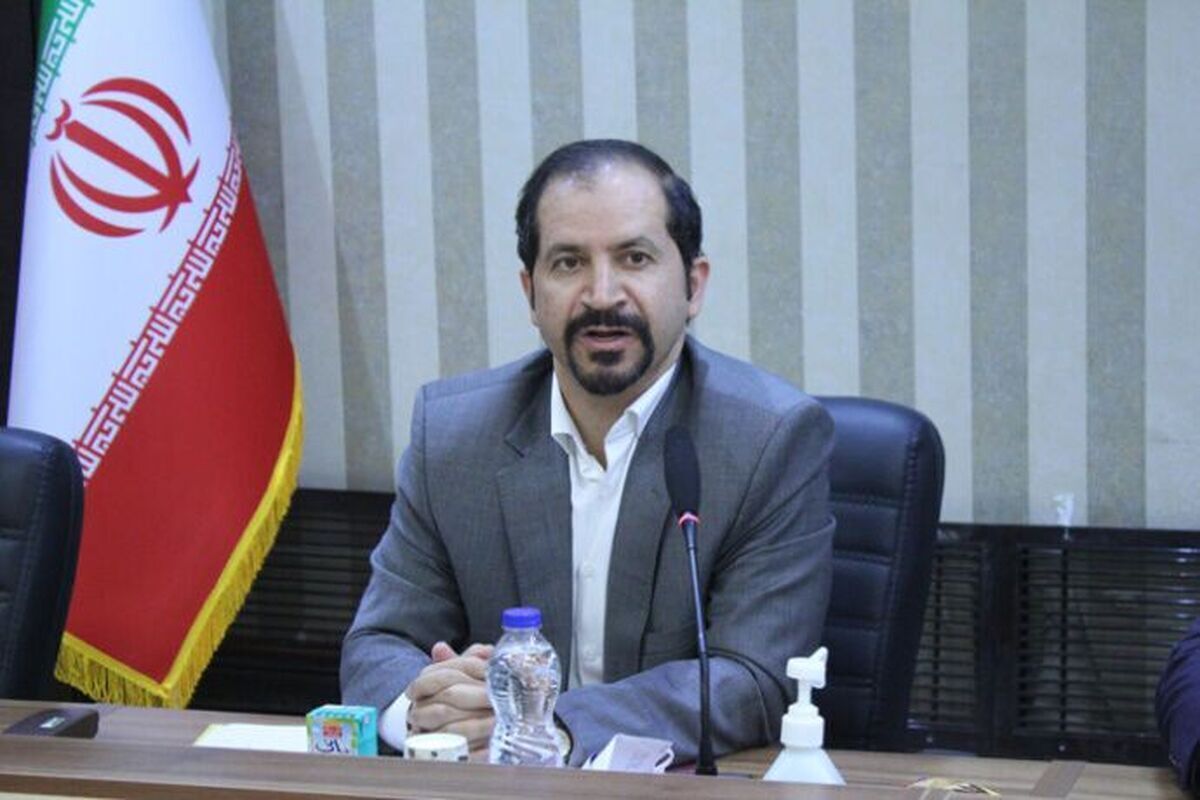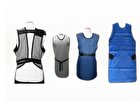Top News of Last Week with ANA

Azad News Agency (ANA) published a number of scientific and technological news during the past week whose top ones are as follows:
Iranian Firm Develops Device for Monitoring Forests, Borders
An Iranian technological firm produced and presented a device in the 23rd Exhibition of Research, Technology, and Techmarket in Tehran which can be used for monitoring the forests and bordering areas.
"We are mostly active in installation and putting into operation the solar systems and we have presented a number of new products in the exhibition, one of which is a monitoring device, used in bordering areas, forests, beaches, power plants, and in places that need accurate monitoring. The device receives energy from the wind," Atena Aslian, the managing-director of Tatmaco company, said.
"This product has a quadcopter helipad. The quadcopter monitors places and returns and charges. It also has a point-to-point radar and a camera,” she added.
Iranian Company Produces Lubricant Oils for Aircraft Engine
An Iranian knowledge-based company succeeded in production of lubricant oils for aircraft engine.
"We produce automobile and industrial diesel engine oils, but we did not have engine oil for aviation industry in the country and we decided to produce it to prevent imports, and now we are one of the five companies in the world that can produce it,” Mohammad Javad Khajeh, the product manager of Pravia company stationed at the incubator center of Islamic Azad University's Science and Research branch, said on the sidelines of the 23rd Exhibition of Research, Technology, and Techmarket in Tehran.
"HF 510 and SA 500 oils and several other special oils to the aircraft are produced in our company. Lubricant should exist in the engine of an aircraft for its parts to move, and if there is no oil, these parts will rub against each other and cause damage and leave negative impact on the engine,” he added.
Technological Company Meets Iran’s Needs to Micro-CT Scanners
An Iranian technological company has been able to meet the needs of the country’s industries by indigenous production of micro-CT scanners.
“Micro-CT LOTUS-NDT scanner is commonly used in industries. The resolution of the device is better than 2 microns and it is used in oil, metallurgy, mining and other industries,” Chairman of the Board of Directors of Matin Behin Negareh Imaging Technology Company Kamran Gholami said on the sidelines of the 10th Exhibition of Iranian-Made Laboratory Equipment and Materials (Iran Lab Expo 2022) in Tehran.
“For instance, in oil industry we have a process to examine cores that are taken out of the ground to identify oil pools. Many of these steps are destructive or remove a piece of the core that is no longer useful but our device has gone through these tests and works non-destructively. It prepares microplate samples from these cores and identifies the holes that exist inside the stone,” he added.
Gholami said that the Iran-made micro-CT device has no domestic counterpart and its production has prevented imports to the country.
Production of Environmentally-Friendly Biocompost Fertilizer in Iran
Iranian researchers at Islamic Azad University produced biocompost fertilizers which do not harm the environment.
"Our product is a biocompost and nanocompost, and an intermediate between chemical fertilizer and animal manure which is used in the agricultural field. In other words, it enjoys the energy and additional elements of chemical fertilizers but does not have the contamination of livestock and animal fertilizers; a type of fertilizer that has the advantages of both types of fertilizers but without their problems and disadvantages, and can be a suitable alternative to the use of animal manure by farmers,” Reza Kazzemi, a Ph.D. student of Biotechnology at Islamic Azad University’s Yasouj branch, said on the sidelines of the 23rd Exhibition of Research, Technology, and Techmarket in Tehran.
He described wastes produced in houses, agricultural sector and factories, specially juice production plants, as the main ingredients of the biocompost and nanocompost.
“They are collected from the plants and useful bacteria are added to them in the laboratory environment. After this stage, based on the existing formulas, heavy and harmful elements are separated from household waste, and finally, a high-quality and completely biological product is manufactured based on the European indicators which contains materials needed by all types of garden, crop and potted plants," Kazzemi said.
Iranian Scientists Produce Special Kits to Diagnose Coronavirus, ICU Infection, Brucella
Iranian scientists at Islamic Azad University’s Shahr-e Kord branch produced special kits to diagnose COVID-19 virus, ICU infection and brucellosis disease.
"We have produced diagnostic kits to detect coronavirus, ICU infection and brucellosis. It does not have a domestic counterpart and it was produced for the first time in Iran at Islamic Azad University’s Shahr-e Kord branch and its price is one third of the foreign models,” Touraj Khosravi, a microbiology student at Shahr-e Kord branch, said on the sidelines of the 23rd Exhibition of Research, Technology, and Techmarket in Tehran.
"The kit for detecting infectious agents in the ICU ward has 50 tests which means that it shows 50 infections, prevents ICU infections and reduces time of the patients’ hospitalization,” he added.
Noting that brucellosis is a common disease between humans and animals, Khosravi said, “The brucella kit detects this disease (brucellosis or malta fever) which has two advantages over foreign samples. In fact, this kit detects two species of brucella and is also used in laboratories, companies and hospitals.”
He also announced production of special kits for detection of meat fraud that assesses the quality of meat.
Iran Stepping up Efforts to Boost Tech-Based Exports
Number of companies and researchers working on tech-based products is surging in Iran, indicating that Tehran is serious to build a new economy based on science, research and technology.
Iranian Researchers Indigenize Industrial Cutting Machine
Iranian researchers at a technological company succeeded in production of a band saw machine for cutting hard parts in different industries.
“The band saw cutting machine is used in almost all industries and they enjoy high capability and quality for precise and easy cutting of all types of heavy metals, including copper, iron, aluminum and all types of profiles by choosing the appropriate blade,” said Hamidreza Taghizadeh Khatir, a member of the board of directors of the company.
He described the band saw cutting machine as a key equipment needed in the workshops and small industries, saying, “The device is a member of the cold cutting devices group and is one of the most widely-used devices for creating cuts in all kinds of materials thanks to its speed and easy function.”
Taghizadeh said that conditions like breakage of the blade and other safety measures have been precisely considered in manufacturing the Iran-made band saw, adding that the machine helps reduction of human errors.
Light from Outside Our Galaxy Brighter than Expected
Scientists at Rochester Institute of Technology analyzed new measurements showing that the light emitted by stars outside our galaxy is two to three times brighter than the light from known populations of galaxies, challenging assumptions about the number and environment of stars are in the universe.
The research team analyzed hundreds of images of background light taken by the Long-Range Reconnaissance Imager (LORRI) on NASA's New Horizons mission to calculate the cosmic optical background (COB) -- the sum of light emitted by stars beyond the Milky Way over the history of the universe. If the COB brightness doesn't equal the light from galaxies we know about, it suggests there might be missing sources of optical light in the universe, the Astrophysical Journal reported.
"We see more light than we should see based on the populations of galaxies that we understand to exist and how much light we estimate they should produce," said Teresa Symons '22 Ph.D. (astrophysical sciences and technology), who led the study for her dissertation and is now a postdoctoral researcher at University of California Irvine. "Determining what is producing that light could change our fundamental understanding of how the universe formed over time."
Fossil-Sorting Robots to Help Researchers Study Oceans, Climate
Researchers at North Carolina State University developed and demonstrated a robot capable of sorting, manipulating, and identifying microscopic marine fossils.
The new technology automates a tedious process that plays a key role in advancing our understanding of the world's oceans and climate -- both today and in the prehistoric past, the Sciencedaily reported.
"The beauty of this technology is that it is made using relatively inexpensive off-the-shelf components, and we are making both the designs and the artificial intelligence software open source," says Edgar Lobaton, co-author of a paper on the work and an associate professor of electrical and computer engineering at North Carolina State University. "Our goal is to make this tool widely accessible, so that it can be used by as many researchers as possible to advance our understanding of oceans, biodiversity and climate."
The technology, called Forabot, uses robotics and artificial intelligence to physically manipulate the remains of organisms called foraminifera, or forams, so that those remains can be isolated, imaged and identified.
Iran-Made Kit Determines Need for Chemotherapy in Breast Cancer
Iranian scientists at a research center succeeded in production of special kits which can determine the need for chemotherapy in patients with breast cancer.
“Reduction of the costs and undesired side effects of chemotherapy is one of the advantages of this kit,” Rezvan Esmayeeli, a faculty member and head of the genetics department of Mo’tamed Cancer Research Institute affiliated to Academic Center for Education, Culture and Research (ACECR) of Iran said.
“At present, chemotherapy is used to prevent recurrence and metastasis in most patients with breast cancer after surgery,” she noted.
Esmayeeli said that with the successful implementation of the project to produce a kit to determine the need for chemotherapy in breast cancer, it is possible to perform this test - as one of the important steps in diagnosing and choosing the treatment method for breast cancer patients - at a much lower price and in a minimum period of time in Iran.
Rotating Nozzle for Washing Tubes Produced in Iranian Technology Park
Researchers of a technological company stationed at Pardis Technology Park in Tehran succeeded in making a rotary tube-washing nozzle with a working pressure of 1,500 bar.
“The rotating high-pressure tube-washing nozzle has been produced for application in converter tubes for cleaning and it can be used in peeling, splitting and advancing modes by changing the nozzle head,” said Mina Saeedi Heidari, the head of the board of directors of the technological company at Pardis Technology Park.
She described the rotating tube-washing nozzle as the smallest high-pressure rotating nozzle that works with the rotation power and water pressure, and said, ”The nozzle has a very high abrasion resistance compared to foreign samples due to its nanocoating and it saves nearly 70% of water compared to the fixed nozzles.”
She underlined that industries like petrochemicals and oil and gas, power plants, construction, food, marine and shipbuilding, aviation, auto-making, agricultural and livestock, paper and any industry that needs water jet for cleaning are the target market of the product.
Iran-Made Layering Device Makes Creation of Nanostructures Possible for Industries
A technological company in Iran developed a set of devices for creating nanostructured coatings and layering which enables industries to have nanostructured layers on desired surfaces.
The desktop sputtering layering device is a special tool for creating a wide range of thin layers on different substrates.
Different materials can be placed on the surface with the help of the device, provided that the surface’s materials can withstand the conditions inside the device, including plasma and ion bombardment.
Any compound that can withstand the conditions of the device can be used as a substrate, and nanocomposites and nanoscale coatings can be created thanks to this technology.
The device can also be used to make all kinds of thin film sensors, solar cells and optical devices as well as nanoelectronic and microelectronic parts.
Iranian Scientist Finds Liver as Final Destination of Absorbed Microplastics
An Iranian researcher at University of Tehran traced the microplastics absorbed in the human body, finding out that their final destination is the liver.
Arash Javanshir Khoyee, a faculty member of the Agriculture and Natural Resources department of University of Tehran, in a research titled ‘Microplastics in the Caspian Sea Region's Ecosystem’ tracked the path of microplastics in the human body and understood that the most-likely place they tend to migrate is the liver.
“Given the human lifestyle today, plastics come in the form of scales, strings or balls and are absorbed by aquatic and other animals in nature, including oceans and seas, and on land,” Javanshir Khoyee explained.
Noting that at present, nearly 6 billion tons of microplastics exist in the North Pole, he said, “Plastics have found their way and increased in nature in a way that even a polar bear has one kilogram of absorbed plastic in his body.”
Iran Gains Self-Sufficiency in Designing, Production of Weather Simulation Chamber
A knowledge-based company active in production of advanced equipment succeeded in manufacturing a weather simulator chamber to simulate the atmospheric and environmental conditions.
“The design and production of chambers is one of activities of our company. Chambers are closed enclosures in which different weather conditions are simulated,” Mohammad Ali Balouchian, the managing-director of the company, told ANA.
He added that researchers and manufacturers use these enclosures for innovation and increasing the safety of their product they produce, noting that different types of chambers exist and the chamber which works without vibration is one of the most widely used ones.
“There are many differences in the climate of different regions, and the products in such conditions should show the necessary resistance to different temperatures during production, transportation, storage and use, and therefore, chambers help the producers in this regard,” Balouchian said.
4155/v
























